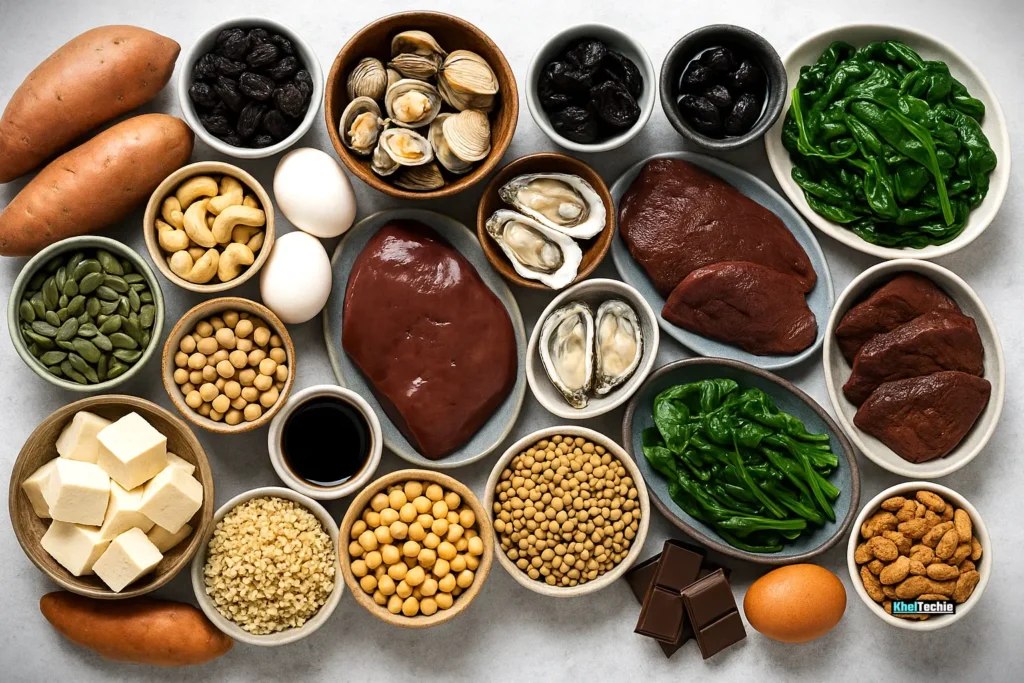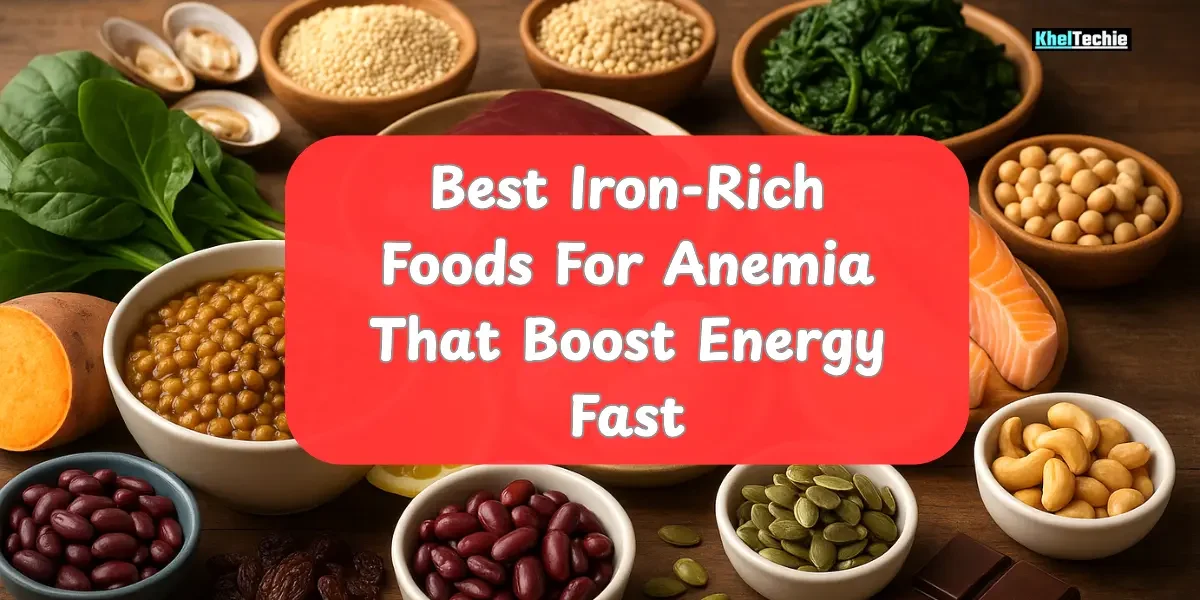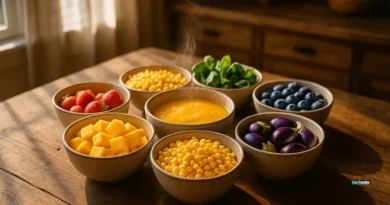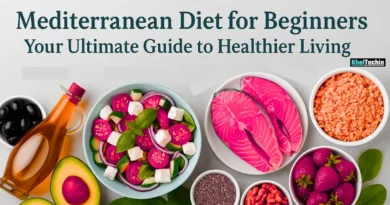The Best Iron-Rich Foods for Anemia: Your Complete Guide to Boosting Energy and Health
Feeling Drained? Iron Could Be the Missing Link
Do you often feel exhausted, lightheaded, or out of breath even after mild activity? These could be signs of iron-deficiency anemia, a condition where your body lacks enough iron to produce healthy red blood cells. Iron is essential for transporting oxygen throughout your body, and without it, your energy levels can plummet.
The good news? Incorporating iron-rich foods into your diet can help restore your vitality. This comprehensive guide will walk you through the best Iron-Rich Foods for Anemia, tips to enhance absorption, common pitfalls to avoid, and answers to frequently asked questions.
Also read – Best Exercises for Hormonal Balance

Understanding Iron and Its Importance
What Is Iron and Why Do You Need It?
Iron is a vital mineral that plays a crucial role in various bodily functions, including:
- Oxygen Transport: Iron is a key component of hemoglobin, the protein in red blood cells responsible for carrying oxygen from your lungs to the rest of your body.
- Energy Production: Iron is involved in energy metabolism, helping convert nutrients into energy.
- Immune Function: Adequate iron levels support a healthy immune system, aiding in the body’s defense against infections.
- Cognitive Function: Iron contributes to normal cognitive development and function.
Without sufficient iron, your body struggles to perform these essential tasks, leading to symptoms like fatigue, weakness, and impaired concentration.
Why Iron-Rich Foods Matter for Anemia
The Impact of Iron-Deficiency Anemia
Iron-deficiency anemia occurs when your body doesn’t have enough iron to produce adequate hemoglobin. This condition can result from various factors, including poor dietary intake, blood loss, or increased iron needs during pregnancy. One of the most common causes is iron deficiency, which affects over 2 billion people worldwide, according to the World Health Organization (WHO).
The solution? Eating more iron-rich foods.
Think of iron as fuel for your body. Just like a car needs gas to run, your body needs iron to produce energy and keep your organs functioning properly.
There are two types of dietary iron:
- Heme Iron: Found in animal products (like meat and seafood), it’s more easily absorbed.
- Non-Heme Iron: Found in plant-based foods and fortified products, it requires a little help (more on that later).
Common symptoms include:
- Persistent fatigue
- Shortness of breath
- Pale skin
- Dizziness or lightheadedness
- Cold hands and feet
Addressing iron deficiency through diet is a natural and effective strategy to alleviate these symptoms and improve overall health.
That’s the power of food.
But not all iron-rich foods are created equal. Let’s break down the top choices and how to use them effectively.

Top 20+ Iron-Rich Foods for Beating Anemia
Here’s a detailed list of the best natural sources of iron, including both heme and non-heme options. I’ve also included tips to boost absorption!
| Food | Iron (mg per serving) | Type | Serving Size |
|---|---|---|---|
| Clams | 23.8 mg | Heme | 3 oz |
| Liver (chicken or beef) | 5–8 mg | Heme | 3 oz |
| Oysters | 9.5 mg | Heme | 3 oz |
| Spinach (cooked) | 6.4 mg | Non-heme | 1 cup |
| Lentils | 6.6 mg | Non-heme | 1 cup |
| Tofu | 6.6 mg | Non-heme | ½ cup |
| Chickpeas | 4.7 mg | Non-heme | 1 cup |
| Quinoa | 2.8 mg | Non-heme | 1 cup |
| Blackstrap molasses | 3.5 mg | Non-heme | 1 tbsp |
| Red kidney beans | 5.2 mg | Non-heme | 1 cup |
| Beef (lean cuts) | 3.2 mg | Heme | 3 oz |
| Turkey (dark meat) | 2.3 mg | Heme | 3 oz |
| Sardines | 2.9 mg | Heme | 3 oz |
| Cashews | 1.9 mg | Non-heme | ¼ cup |
| Pumpkin seeds | 2.7 mg | Non-heme | ¼ cup |
| Dark chocolate (70%+) | 3.4 mg | Non-heme | 1 oz |
| Fortified cereals | 18 mg | Non-heme | 1 serving |
| Raisins | 1.6 mg | Non-heme | ½ cup |
| Eggs | 0.9 mg | Heme + Non-heme | 2 large |
| Prunes | 0.9 mg | Non-heme | ½ cup |
| Sweet potatoes | 2.4 mg | Non-heme | 1 medium |
Vegetarians Special:
- Legumes (lentils, chickpeas)
- Dark leafy greens
- Whole grains
- Tofu
- Nuts and seeds
Common Mistakes to Avoid When Eating for Anemia
Even if you’re eating iron-rich foods, certain habits can block absorption. Here are some common pitfalls:
❌ Drinking coffee or tea with meals
These contain tannins, which inhibit iron absorption. Wait at least 1 hour after eating before sipping.
❌ Over-relying on spinach
While spinach is rich in iron, it also contains oxalates, which reduce absorption. Pair it with vitamin C-rich foods like lemon juice or bell peppers.
❌ Skipping vitamin C
Vitamin C boosts non-heme iron absorption by up to 300%. Add oranges, strawberries, broccoli, or tomatoes to your iron-rich meals.
❌ Assuming all supplements are safe
Too much iron can be harmful. Always consult a healthcare provider before taking supplements.
❌ Ignoring hidden symptoms
Fatigue, dizziness, brittle nails, and cold hands/feet aren’t “normal.” If they persist, see your doctor.
Maximize Iron Absorption
🍊 Combine with Vitamin C
Add a squeeze of lime to lentil soup or have a glass of orange juice with oatmeal.
🐄 Prioritize Animal Sources
If you’re not vegetarian, include lean meats like beef or turkey for better iron uptake.
🍶 Soak and Sprout Grains/Nuts
This reduces phytates, which interfere with iron absorption.
🍽️ Eat Iron-Rich Foods at Separate Meals
Avoid pairing iron with calcium-rich foods (like dairy) in the same meal — calcium inhibits iron.
🕒 Space Out Meals
Eat smaller, frequent meals throughout the day to give your body time to absorb nutrients.
Original Insights: A Real-Life Story
In June 2023, I struggled with fatigue and brain fog. My blood work revealed low iron. I didn’t want to start supplements immediately, so I focused on food.
I began adding lentil soups, spinach salads with lemon dressing, and lamb meat stir-fries with bell peppers into my weekly meals. I stopped drinking coffee with lunch and added a vitamin C supplement in the morning.
After just 8 weeks, I felt more energized. By week 12, my bloodwork improved significantly.
It wasn’t magic, just smart nutrition.
Final Thoughts: Take Control of Your Health
You don’t have to live with fatigue, weakness, or brain fog. By incorporating the best iron-rich foods for anemia into your diet, you can support your body’s natural ability to heal and thrive.
Remember:
- Eat a variety of iron-rich foods.
- Pair them with vitamin C.
- Avoid absorption blockers like tea during meals.
- Consult a healthcare provider if symptoms persist.
🙋♀️ Have Questions? We Want to Hear From You!
Did this guide help you understand what to eat for anemia?
Do you have a favorite iron-rich recipe or tip?
Or maybe you’re still confused about something?
💬 Leave a comment below , we’d love to hear your story or answer your questions!
And if you found this helpful, please share it with someone who might benefit from learning about the best iron-rich foods for anemia.
Note: Always consult with a healthcare professional before making significant changes to your diet or starting new supplements.
FAQs:
What are the fastest ways to raise iron levels?
Focus on heme iron sources like red meat, liver, and shellfish. Pair them with vitamin C-rich foods and avoid inhibitors like tea/coffee during meals.
Can I cure anemia with food alone?
Mild cases can improve through diet, but severe anemia may require supplements or medical treatment. Always consult a doctor first.
Is banana good for anemia?
Bananas are low in iron but high in other nutrients. Pair them with iron-rich foods like fortified cereal or peanut butter for a balanced snack.
Do eggs have enough iron?
Two eggs provide around 1.8 mg of iron, mostly in the yolk. They’re not the richest source but still contribute to daily intake.
What should vegetarians eat for iron?
Focus on legumes, tofu, quinoa, pumpkin seeds, dark leafy greens, and fortified foods. Always combine with vitamin C
Does spinach really help with anemia?
Yes, but it’s not the most bioavailable source due to oxalates. Cook it lightly and pair with lemon juice or bell peppers.
How long does it take to correct iron deficiency?
It depends on severity, but many people feel improvements within 2–3 weeks of dietary changes. Full recovery can take 3–6 months.
Can too much iron be dangerous?
Absolutely. Excess iron can lead to hemochromatosis, especially in people with genetic conditions. Always consult a professional before supplementing.
What drinks help with anemia?
Orange juice, tomato juice, beetroot smoothies, prune juice, and green smoothies with kale and berries are great for boosting iron absorption.
What breakfast foods are high in iron?
Try fortified cereal with berries, spinach omelets with whole-grain toast, or quinoa porridge with nuts and dried fruit.




